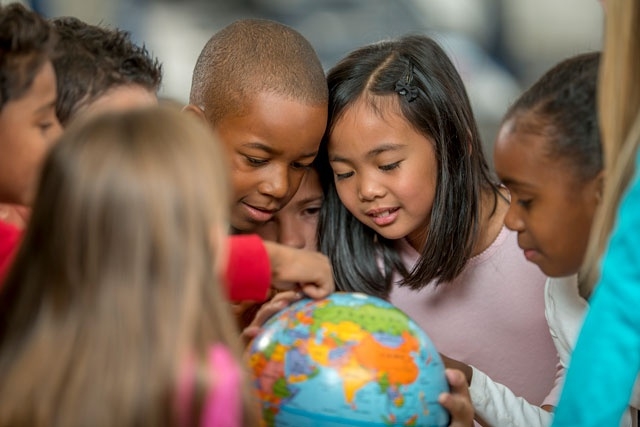Racial and ethnic diversity are facts of life in many early childhood classrooms. Mistaken ideas about these concepts can affect how early childhood professionals work with children and families. This tip sheet can help teachers better understand these concepts.
Understanding vocabulary
Race and ethnicity are often treated as if they are the same, but they are not.
- Current definitions of “race” refer to hereditary physical traits such as skin color, hair texture, and facial features. Race does not determine anyone’s personality or culture. “Black,” “white,” and “biracial” are commonly used racial categories.
- “Ethnicity” refers to aspects of a group’s culture, such as shared values and attitudes, home language, and celebrations, clothing styles, or food. It is often connected to the part of the world a person’s ancestors are from.
Culturally responsive educators connect with all families and children in diverse programs by learning about families’ customs, experiences, and perspectives. They bring that knowledge to the curriculum to benefit all children.
Working with children
Make sure classroom materials feature a range of racial and ethnic groups.
- Provide dolls and play figures with a variety of skin tones, eye colors, and hair colors, textures, and styles.
- Share books from diversity-focused children’s literature award lists such as the Coretta Scott King Award, the Pura Belpre Award, and the Asian/Pacific American Librarians Association Literature Award.
Help all the children get to know one another.
- Support project work that addresses diversity, such as exploring the types of bread eaten by families in the program.
- Pair children up to sketch each other. Help them choose markers, crayons, or paints to match skin and hair colors.
Keep in mind that even very young children may notice differences in skin color and other “markers” of race or ethnicity. They also notice how adults react to those differences.
- Gently but firmly correct any mistaken ideas or biases children express. “No, we can’t wash off our skin color. Everybody’s skin is the right color for them.”
- Show respect and care for all the children by talking and playing with each of them.
Working with families
- Find out how families identify their race or ethnicity. “Song-Ae’s family is Korean American. Lola’s dad is Ojibwe.”
- Invite families to share parts of their ethnic heritage, such as active games, lullabies, crafts, or children’s stories.
- Let all families know that you welcome and value families and children of any race or ethnicity.


 PDF
PDF